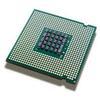The ever-rising computation demand is forcing the move from the CPU to heterogeneous specialized hardware, which is readily available across modern datacenters through disaggregated infrastructure. On the other hand, trusted execution environments (TEEs), one of the most promising recent developments in hardware security, can only protect code confined in the CPU, limiting TEEs' potential and applicability to a handful of applications. We observe that the TEEs' hardware trusted computing base (TCB) is fixed at design time, which in practice leads to using untrusted software to employ peripherals in TEEs. Based on this observation, we propose \emph{composite enclaves} with a configurable hardware and software TCB, allowing enclaves access to multiple computing and IO resources. Finally, we present two case studies of composite enclaves: i) an FPGA platform based on RISC-V Keystone connected to emulated peripherals and sensors, and ii) a large-scale accelerator. These case studies showcase a flexible but small TCB (2.5 KLoC for IO peripherals and drivers), with a low-performance overhead (only around 220 additional cycles for a context switch), thus demonstrating the feasibility of our approach and showing that it can work with a wide range of specialized hardware.
翻译:不断上升的计算需求正在迫使从CPU转向多样化的专门硬件,而这种硬件通过分类基础设施,在现代数据中心中很容易获得,现代数据中心很容易获得。另一方面,信任的执行环境(TEEs)是硬件安全方面最近最有希望的发展之一,它只能保护在CPU中限制的代码,限制TEE的潜能和适用于少数应用。我们注意到,TEE的硬件信任计算基础(TCB)是在设计时固定的,实际上导致使用不受信任的软件来使用TEE的外围。根据这一观察,我们建议使用可配置的硬件和软件TRB来配置小的TRB(2.5 KLOC),允许飞地使用多种计算和IO资源。最后,我们提出了两个综合飞地案例研究:i)一个基于RISC-V Keystone 的FPGA平台,该平台在设计时,该平台实际上导致使用不受信任的软件在TEE公司内使用外围。根据这一观察,我们建议,我们提议采用可配置的硬件和软件TRB(TC),允许飞地使用多的硬件。最后,展示了一种低度的操作周期。




